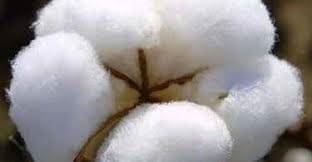Year End Bird’s-eye View on Cotton
By: Seshadri Ramkumar, Professor, Texas Tech University, USA
(Lubbock, USA, December 20, 2019)-Cotton is a natural material, which is pre-sold on comfort and faces competition from other fibers.
A year-end tête-à-tête with Professor Eric Hequet, an internationally renowned fiber quality expert at Lubbock-based Texas Tech University provided useful information that may benefit the global textile sector.
Focus on quality, providing maximum information on fiber quality and developing new products and markets are some aspects Hequet insisted that the industry should be concentrating.
“If the end-users such as spinners could know what they are buying in terms of cotton, it is a big plus,” stated Hequet. United States’ cotton industry has been a leader in providing maximum information on a bale of cotton. Other leading producers such as Brazil and India have started paying attention to providing information. As long as fiber quality evaluation is handled by reliable independent agency such as the United States’ Department of Agriculture classing offices, data’s credibility will be well accepted. Brands are demanding more source information to stay competitive and gain consumer acceptance and hence data dissemination is becoming vital.
Stakeholders’ contribution to the growth of the industry is vital for not only the cotton sector but also holds good for all sectors. Stakeholders need to support “mission-linked,” research for enhancing market share and use-value.
To a question from this scribe on what is next for the industry, Hequet stated improving fiber length uniformity, strength and finding new applications should be the task. He highlighted the growing interest in vortex spinning, which necessitates the need for length and strength improvement. The surface structure of these yarns are on par with ring spun yarns, but the internal structure is week. Therefore, fiber strength improvement to 40-42 grams/tex will help. Labor cost is rising even in some eastern countries, which makes ring spinning expensive. Cotton sector can help by breeding fibers that will suit newer spinning technologies.
Hequet’s view on what should be the goal for the industry in the next five years included focusing on drought resistance and water efficiency without sacrificing fiber quality. As the global population is on the rise, maintaining cotton’s market share at 30% will enable more use of cotton based on consumption.
The biodegradability aspect has to be effectively handled by the industry both for developing new biomaterials and for marketing. For past few years, I have been advocating focusing our attention beyond, yield and quality such as creating new value-added products–this aspect came out clear in the discussion with Professor Hequet. With 38-years of experience in the cotton sector starting as a breeder in Chad, Hequet ended with a positive note that cotton is here to stay.
TexSnips publisher wishes you and yours, a safe holiday season ahead and the very best for New Year 2020!

